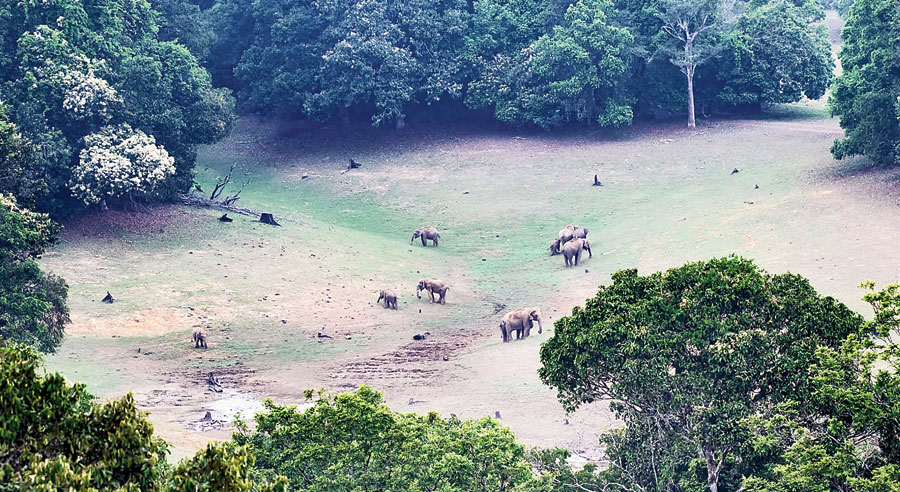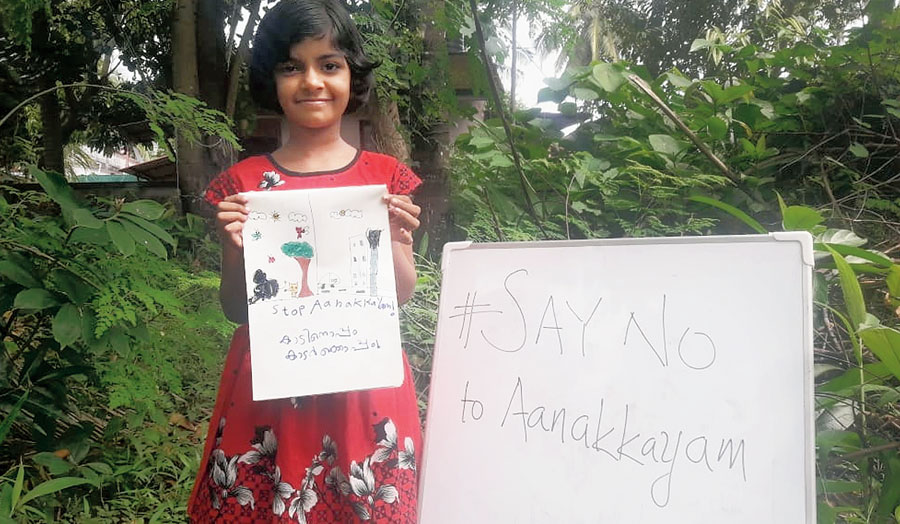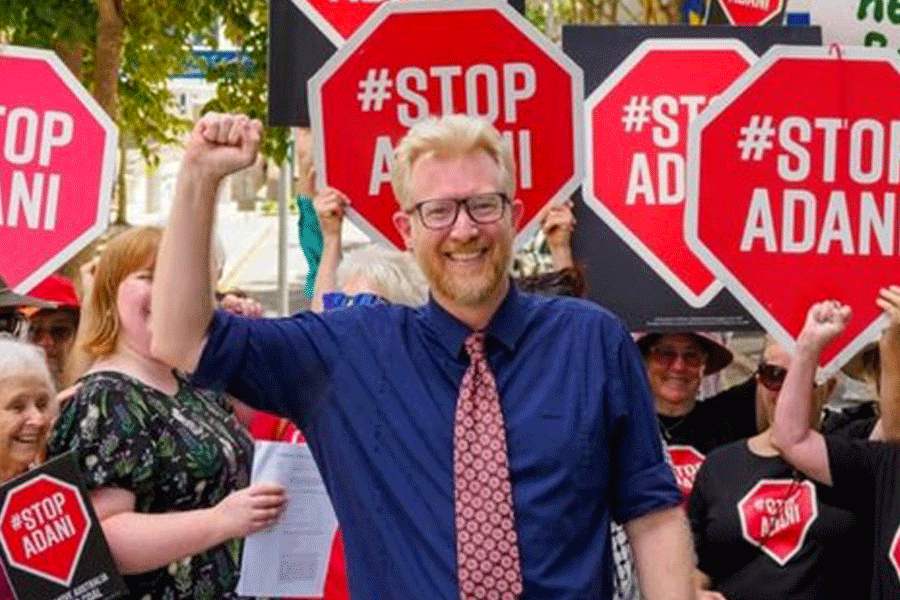When tribal leader V.K. Geetha saw a WhatsApp message a few weeks ago, her worst suspicions were aroused.
It seemed that the family and tribe legacy she had inherited — getting displaced again and again in the name of development – had reared its head afresh.
But what her forefathers could not do in the face of the might of the colonial rulers and later a democratic government, Kerala’s first woman tribal chieftain, now in her early 30s, is determined to. Resist.

Wild elephants roam around the project site

The forest from where the Kadars collect honey
Geetha belongs to the forest-dwelling Kadar community that enjoyed an undisturbed existence till the beginning of the 20th century in the interiors of what is now the Parambikulam Tiger Reserve.
It was in 1905 that her ancestors were forced to leave the area after the British Presidency of Madras began building a tramway linking the forest region to Chalakudy railway station in central Kerala.
The objective was to transport teak and valuable timber artefacts to Kochi harbour to be shipped to Great Britain, where even the royal family had a weakness for furniture made out of Parambikulam timber.
Geetha’s forefathers moved to a forested locality called Peringalkuthu, where they lived until the government began building a hydel project shortly after Independence.
With their settlement demolished by authorities, the Kadars were forced to shift to the Sholayar region of the same stretch of forest.
The 1970s brought another hydel power project — this time to Sholayar — and another eviction. Now, Geetha lives at a place called Vazhachal, a few kilometres from Sholayar and near the Anakkayam forest.
Ninety per cent of Kerala’s 1,848 Kadars live in nine settlements in and around the Anakkayam region.
Now, with a new hydel project looming, and threatening displacement and loss of livelihood, Geetha is categorical that the community would not take this any more.
The WhatsApp message that caused her to smell a rat had been circulated by the Kerala State Electricity Board (KSEB). It had sought contractors to fell and remove trees from the Anakkayam forest.
The message said the board wanted to cut down 2,000 trees across 20 acres of forestland for the construction of a small hydroelectric project.
When Geetha contacted forest department officials at Vazhachal and nearby Athirapally, they initially feigned ignorance about such a project. They said no such project could be carried out without the consent of the nine Kadar settlements.
These settlements had already won community forest rights (CFR) on the entire stretch of forest from Malakkappara on the Tamil Nadu border to Athirappally, near Chalakudy town, under the forest rights act.
However, KSEB officials later told Geetha they planned to implement the project, based on a consent given by the state forest department eight years ago, and the work would begin soon.
V. Ajitha, secretary of the community forest rights coordination committee of all the nine Kadar settlements, said the KSEB move had shocked all the tribal people in the
region.
Ajitha has filed a case with Kerala High Court accusing the electricity board of violating CFR and the forest rights act.
S.P. Ravi of the NGO Chalakudy River Protection Forum said the hydel project would have an installed capacity of 7.5MW at the Anakkayam falls in the Chalakudy river basin.
The KSEB is planning to blast a 5km tunnel at Anakkayam through the rocky forest terrain to channel the tail-race discharge from the existing Sholayar power plant. The hydel project will have an underground power plant that will use the spill from the Sholayar dam and the seasonal rainfall.

A girl holds up a poster.
Eco threat
The project site comes under the ecological buffer zone of the Parambikulam Tiger Reserve, and most of the trees to be axed are evergreen.
Anakkayam and Vazhachal are major elephant habitats. With the Chalakudy — which flows through Anakkayam, Vazhachal and Athirapally — already hosting half-a-dozen hydel projects, wildlife movement has already been affected on a large scale. The new project will further disturb the fauna, environmentalists say.
Anakkayam suffered a big landslide during the 2018 Kerala floods. It destroyed the huts of the tribal people who lived close to the proposed project site, forcing them to move.
The tribal communities and environmentalists say the tunnelling for the project, involving rock blasting, will increase the risk of landslides.
The Chalakudy’s banks were the worst-hit during the 2018 floods, with one of the reasons cited being the half-dozen power projects on the river.
Collecting minor forest produce in Anakkayam forms the livelihood of Kadars in all the nine settlements. The produce include honey, spices, tubers and mushrooms. Once the Kadars used to hunt animals but the enforcement of new laws has stopped all hunting, poaching and timber smuggling since the 1970s.
Formerly, the Kadars had a nomadic lifestyle and practised shifting cultivation apart from growing rice and millets.
Harish Vasudevan, environmentalist and Kerala High Court lawyer, said the Kadars help protect the forest ecology, safeguarding four varieties of hornbills in the Athirapally-Vazhachal region under a project piloted by the state forest department.
The Kadars also face a threat from the proposed 163MW Athirapally hydel power project, which involves a huge dam blocking flow into the majestic Athirappilly waterfalls.
The project, which was in the cold storage for a long time, was revived in June this year but the KSEB had to shelve it again in the face of stiff public opposition.











